
Hypoxic and anoxic regions in the Baltic Sea, 2014
The content of this webpage is part of the Marine Science Report No 100 2016 and should be cited as:
Susanne Feistel, Rainer Feistel, Dietwart Nehring, Wolfgang Matthäus, Günther Nausch, Michael Naumann: Hypoxic and anoxic regions in the Baltic Sea, 1969 - 2015. Meereswiss. Ber., Warnemünde, 100 (2016) doi: 10.12754/msr-2016-0100
All version information and information on further technical development are available via the website https://www.io-warnemuende.de/msr-2016-0100.html

This work is licensed under a Creative Commons Attribution-NonCommercial 4.0 International License.
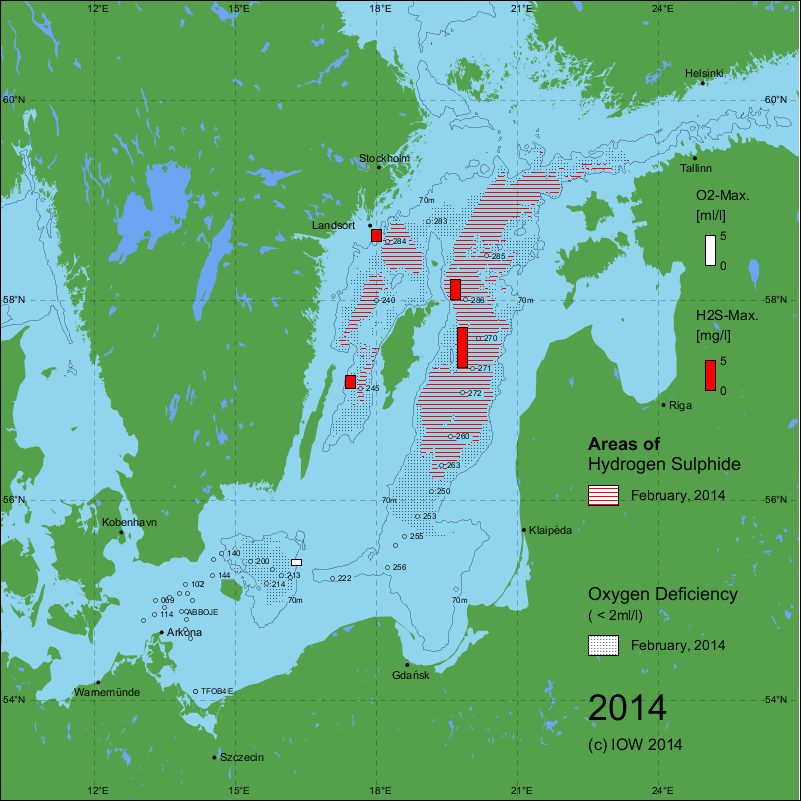
Jan/Feb, 2014: download SVG (computed 2016)
|
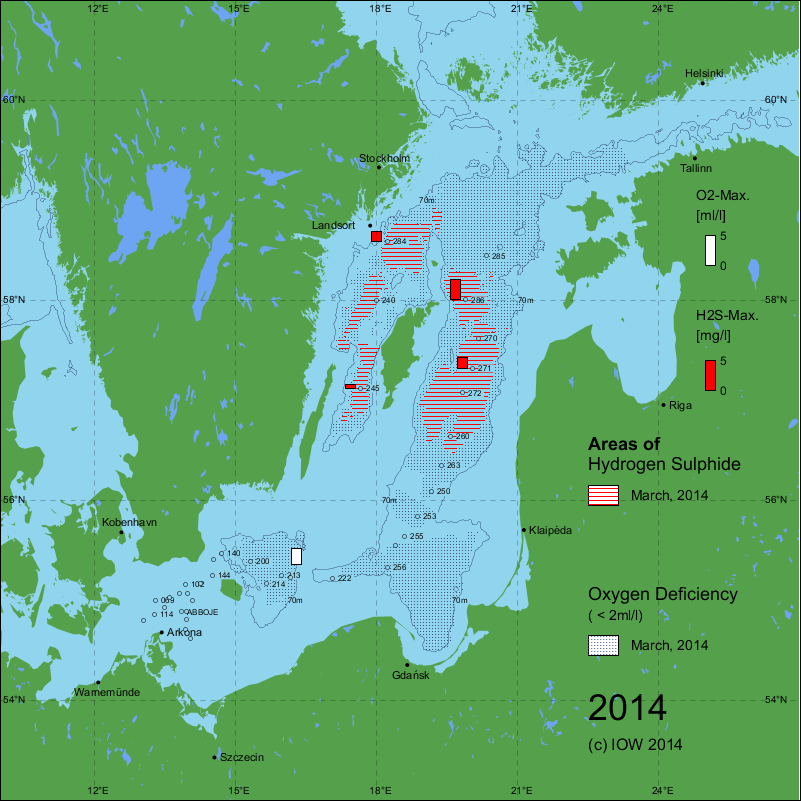
Mar/Apr, 2014: download SVG (computed 2016)
|
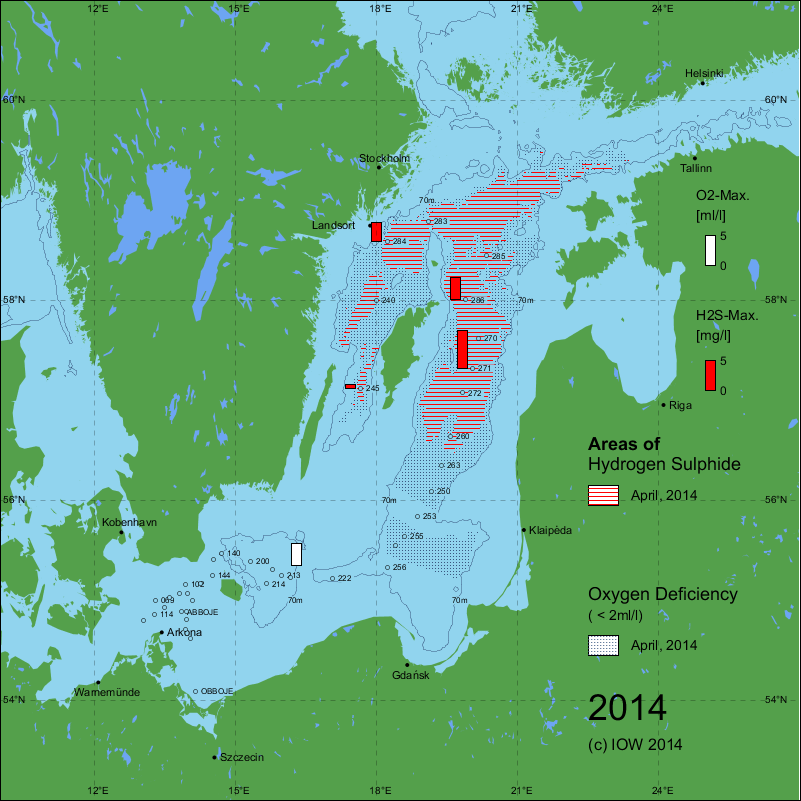
Apr/May, 2014: download SVG (computed 2016)
|
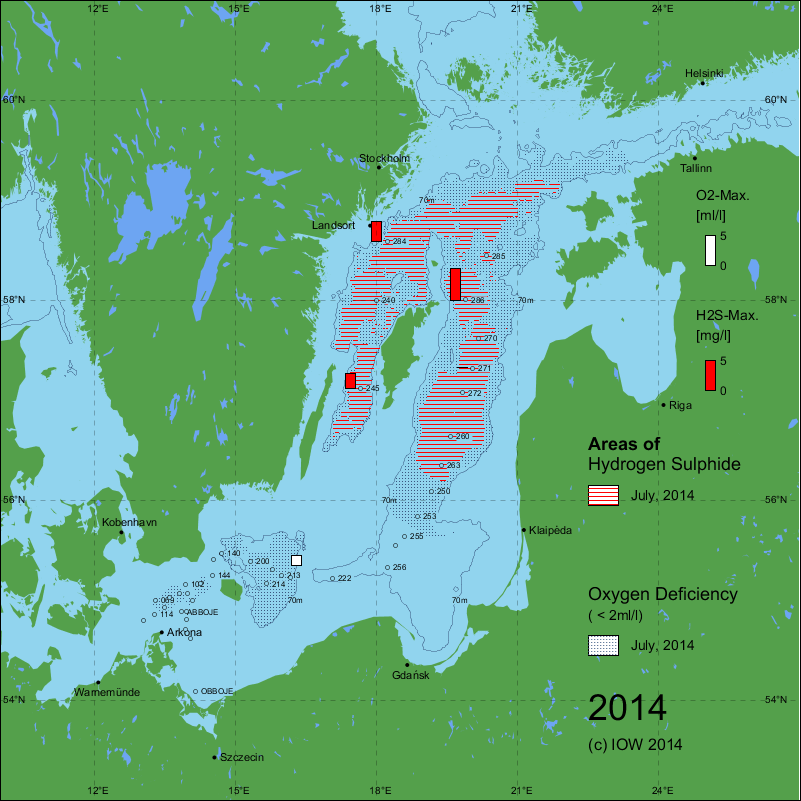
Jul/Aug, 2014: download SVG (computed 2016)
|
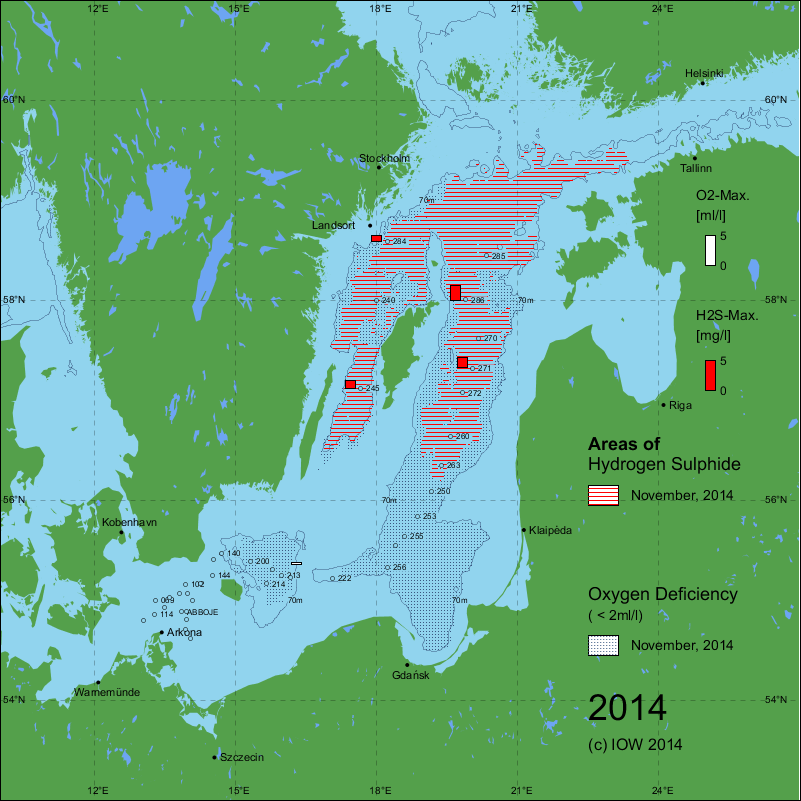
Oct/Nov, 2014: download SVG (computed 2016)
|
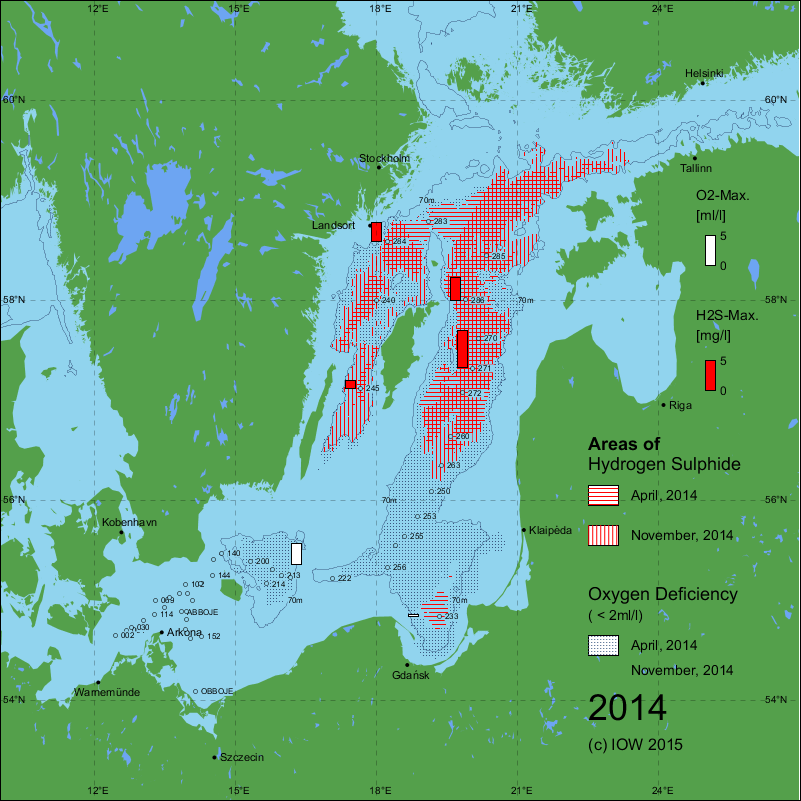
Apr/May & Oct/Nov, 2014: download SVG (computed 2016)
|
| In 2014, the situation in the deep water was changed by the effects of three moderate resp. weak inflows in autumn 2013, February and March 2014 (cf. Table 1). Although none of these three events fulfilled the typical characteristics of a major Baltic inflow, they produced a novel complex interaction reaching the Gotland Deep in late May and oxygenated its deep water briefly for the first time since 2003. In December, the third largest major Baltic inflow on record since 1880 occurred (cf. Fig. 2). Effects can be seen mainly in 2015 (NAUMANN & NAUSCH, 2015, NAUSCH et al., 2015). | |
References:
- NAUMANN, M., NAUSCH, G., 2015: Salzwassereinstrom 2014 – Die Ostsee atmet auf (english title: The Baltic Sea is breathing on – Salt Water Inlet 2014). – Chem. unserer Zeit, 49 (1), 76-80.
- NAUSCH, G., NAUMANN, M., UMLAUF, L., MOHRHOLZ, V., SIEGEL, H., 2015: Hydrographichydrochemical assessment of the Baltic Sea 2014. – Meereswiss. Ber., Warnemünde, 96, 1-93, doi: 10.12754/msr-2015-0096